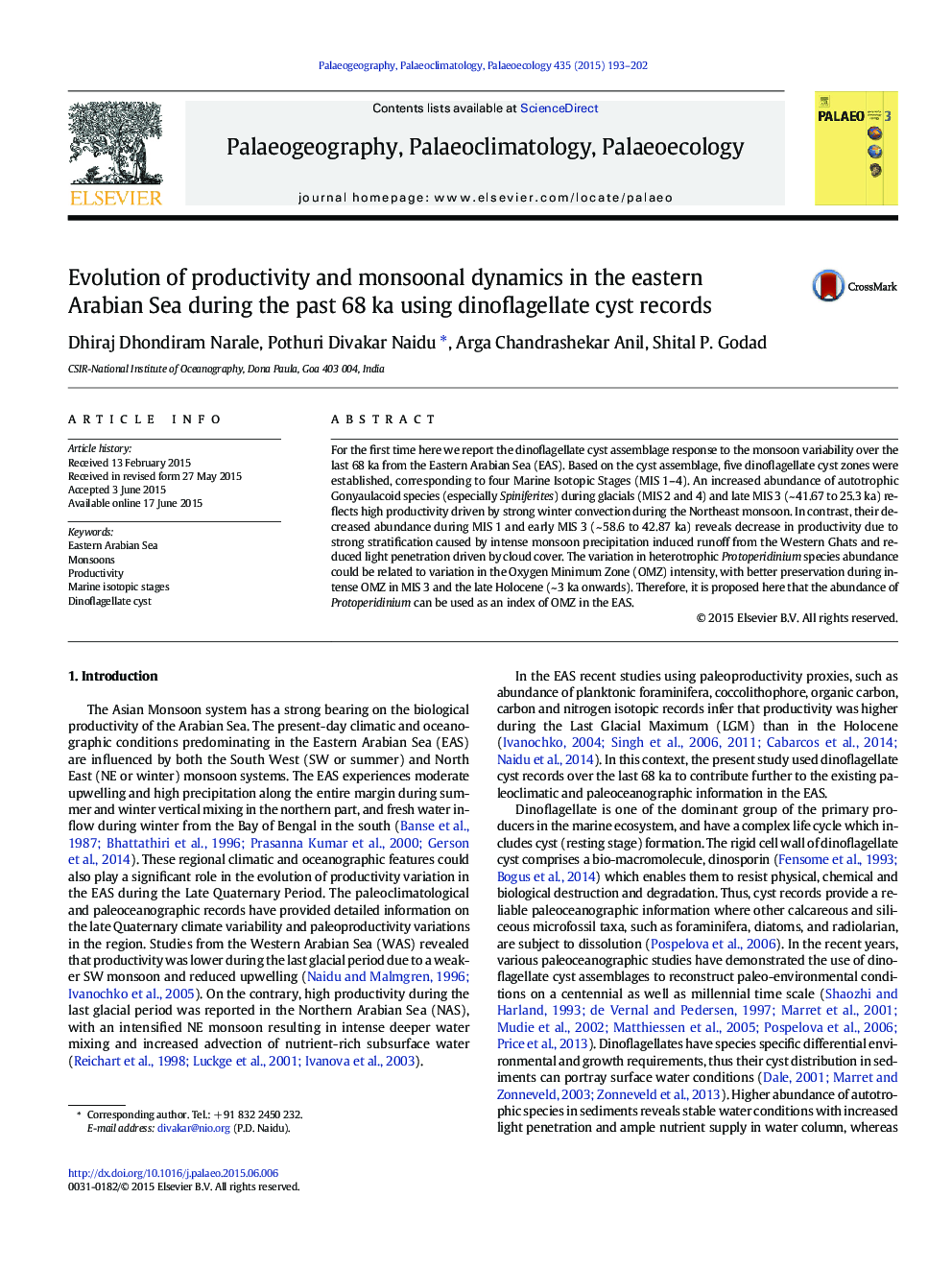| Article ID | Journal | Published Year | Pages | File Type |
|---|---|---|---|---|
| 6349713 | Palaeogeography, Palaeoclimatology, Palaeoecology | 2015 | 10 Pages |
â¢Dinoflagellate cyst proxy for paleoproductivity and monsoonal dynamics in the EASâ¢Productivity increase during MIS 2, 4 and late MIS 3 controlled by winter monsoon.â¢Productivity variability represented by Spiniferites species abundanceâ¢Protoperidinium cyst abundance characterises OMZ variability.
For the first time here we report the dinoflagellate cyst assemblage response to the monsoon variability over the last 68Â ka from the Eastern Arabian Sea (EAS). Based on the cyst assemblage, five dinoflagellate cyst zones were established, corresponding to four Marine Isotopic Stages (MIS 1-4). An increased abundance of autotrophic Gonyaulacoid species (especially Spiniferites) during glacials (MIS 2 and 4) and late MIS 3 (~Â 41.67 to 25.3Â ka) reflects high productivity driven by strong winter convection during the Northeast monsoon. In contrast, their decreased abundance during MIS 1 and early MIS 3 (~Â 58.6 to 42.87Â ka) reveals decrease in productivity due to strong stratification caused by intense monsoon precipitation induced runoff from the Western Ghats and reduced light penetration driven by cloud cover. The variation in heterotrophic Protoperidinium species abundance could be related to variation in the Oxygen Minimum Zone (OMZ) intensity, with better preservation during intense OMZ in MIS 3 and the late Holocene (~Â 3Â ka onwards). Therefore, it is proposed here that the abundance of Protoperidinium can be used as an index of OMZ in the EAS.
